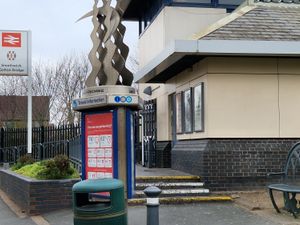Missed opportunities to protect child murdered despite exploitation fears, review finds
A review into the death of a teenager who was murdered in Sandwell, has asked where his chances were to engage in society.

The boy, named only in a report as SC, was known to multiple services across Sandwell, including youth justice services, education, health, children’s social care, and the police.
The offender was convicted and sentenced for murder, and was also known to multiple services across Sandwell.
Both were suspected as having links to gang activity, the child safeguarding practice review notes, but in the case of SC agencies had “previous concerns” he was at risk of being exploited.
The review revealed in the year preceding his death, SC was known to Sandwell’s ‘Horizons’ – the local anti-exploitation team. SC became known to Sandwell council when children’s social care was under the local authority as early as eight months old, due to concerns about neglect and drug misuse in the home where he lived.
His childhood was characterised by “many years of neglectful and compromised parenting”, the review stated. SC was exposed to behaviours including shoplifting, drug misuse and trafficking, and domestic abuse.
The review noted “numerous” safeguarding referrals were made during SC’s life. Multiple primary and secondary schools had struggled to manage his disruptive and challenging behaviour. One placement at a primary school lasted only two months.
Data on preventing school exclusions, in particular black boys, was not available in Sandwell, the report noted.
It concluded the review was “unable to ascertain” the position and rate of school exclusions or managed transitions for young people of different ethnic groups, what support gaps there are for young people identified as having links to exploitation, and the link between criminality and high exclusion rates.
The review was also unable to ascertain the “differences in how pupils and their parents / carers from disproportionally groups engage in the independent review process following an exclusion, and their experience of that process.”
However, the report also recognised the multi-agency work undertaken by Sandwell to address the challenges black families face, including Sandwell’s Early Help Partnership to understand barriers to engagement in black families, and the youth justice partnership board, with a plan on disproportionality.
Concluding, the internal reviewer Gillian Ming said: “This review finds nothing different to other reviews, studies and reports viewed, with evidence of structures in Sandwell to address school exclusions, however this did not go as far as looking at exclusions rates by ethnicity or have a focus on disproportionality.
This omission in itself identifies a gap in the system and a line of sight to young black males such as SC whose complex needs provided opportunities for early support […]
“A final thought has to reflect back to SC and his journey compounded by ‘neglectful and compromised parenting’ travelling through a system where the early signs/indicators of his escalating complex needs are repeatedly addressed under the code of ‘persistent breaches of school’s behaviour policies’, then ask the question: where were his chances? What are the chances for young people such as SC, and will society ever be ready to make changes that can really make a difference?”
SC was known to West Midlands police since the age of 11. The force were aware of SC’s “familial links to gangs” and his “deteriorating behaviour”.
He was arrested at least six times and received charges for assault, attempted robbery, possession of Class A drugs, violent disorder, common assault and malicious wounding. Some of the crimes were said to be related to county lines.
On one occasion, SC was recorded as a victim of trafficking for exploitation when he was found in London, the review noted.
Health staff at Sandwell and West Birmingham NHS trust had a “lack of professional curiosity” when questioning how an injury on a child may have occurred, with reports not “always made”, the review found.
SC presented at A&E six times between the ages of 11 and 15 years – one of these visits with facial injuries having allegedly been assaulted.
Another was with a leg injury reportedly occurring when jumping over a fence.
The review team made seven recommendations for local agencies, including considering a full review of data about fixed or permanent exclusions.
It said: “The system must be able to differentiate cohorts of children including by ethnicity, as well as those who are vulnerable, receiving additional support.
Sandwell and West Birmingham NHS Trust were recommended to ensure referrals are made to children’s social care in all cases where young people have presented at A&E with injuries which could indicate youth violence, including injuries from a knife.
Mel Roberts, chief Nursing officer for Sandwell and West Birmingham NHS Trust, said emergency staff were focused on strengthening their work with safeguarding teams.
He said: “Our deepest sympathies are with the family of the victim in this sad case.
“We have improved the way victims of assault attending our hospitals are referred to our partner agencies by introducing more detailed mandated training to staff around professional curiosity and the ‘Think Family’ approach.
“IT systems have also been enhanced so that both administrative and clinical staff are trained to record and correctly document children and young people who are victims of assault, leading to appropriate action to ensure the safety of the person involved.”
Lesley Hagger, independent chair of SCSP, said the review will “support us to strengthen our interventions and processes to protect and support young people”.
She said: “Our thoughts and condolences are with the family of the young man whose murder prompted this review.
“We looked closely at agencies’ involvement at key points in SC’s life and decided to commission a broader thematic review looking at disproportionality of some groups in relation to exploitation.
"It is vital we identify any areas for learning and improvement from sad cases like this.
“In particular, the review has explored how black children and young people are seen and perceived in the youth justice and safeguarding systems, especially regarding exploitation and gang activity.
“The overall findings of our review do not differ to what is known nationally.
"There are specific points of learning around the level of ethnicity data we need to capture in our systems.
"Work is ongoing across agencies to ensure we have the data we need to understand the patterns and needs of all children and young people, and to better target our support and resources.
“I would like to thank all professionals who have taken part in this review to help partners continue improving the services and support they provide to children and families.”



